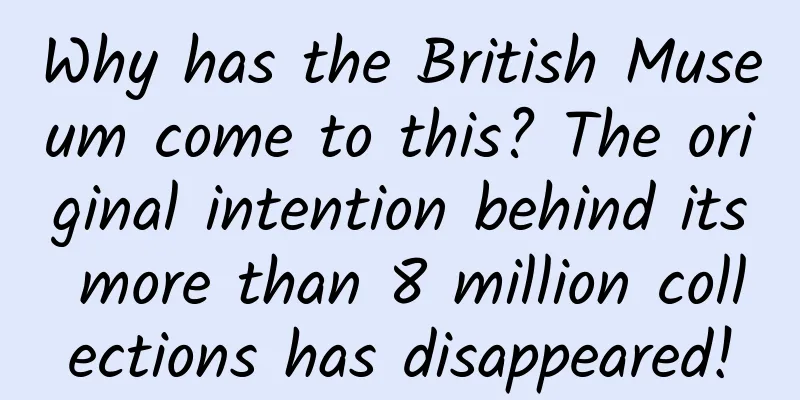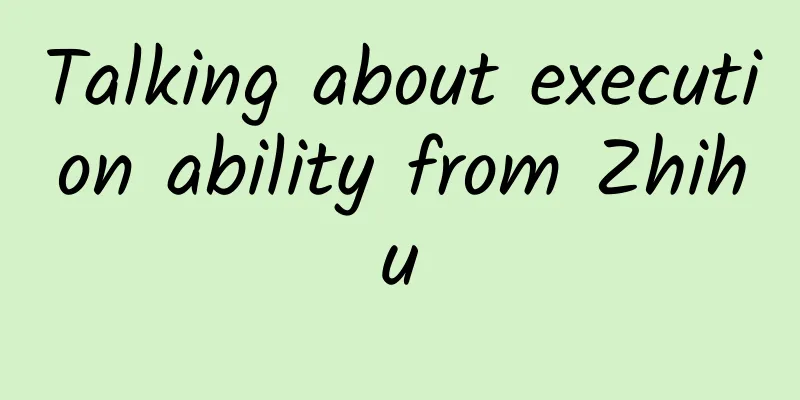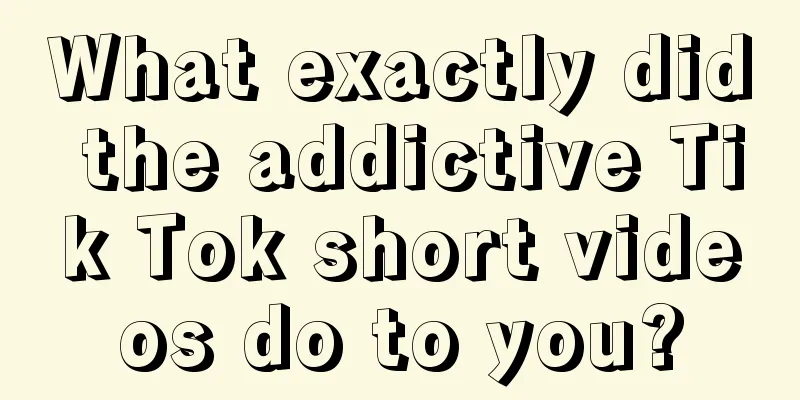Why has the British Museum come to this? The original intention behind its more than 8 million collections has disappeared!

|
You must have heard “The best cultural relics in China are not in China. At the British Museum" (Please slide to view the special exhibition of the Late Qing Dynasty. All exhibits are on loan from other museums. Photographers: @闫廷钰&吴越) ▼ Not just China Most of Egypt’s best artifacts are not in Egypt At the British Museum (Statue of Ramses II, drawing by @Niu Dun/Planet Research Institute) ▼ In fact The best Greek artifacts are not in Greece At the British Museum (Parthenon sculpture, drawing @Niu Dun/Planet Institute) ▼ here it is Collection of all countries in the world All civilizations in history With more than 8 million collections Ranked first in the world British Museum (Please view the British Museum's collection distribution in horizontal mode, compared to the Palace Museum, which has 1.86 million pieces. Map by @Song Nan/Planetary Research Institute) ▼ People criticize its collections as being from the colonial period Stolen, robbed, illegally plundered So why is the British Museum doing this? Doesn't it have a conscience? In fact Behind their violent acts Hiding a story of lost original intention 01 Explore the World When the British first started collecting They don't realize they have inadvertently triggered A series of unstoppable waves It all started in Jamaica Jamaica is located in the Caribbean Sea Since the late 15th century, European countries have discovered this place They rushed to divide up the land, develop plantations, and sell slaves. Opened the infamous Colonial era Among them, Britain is a small island country Seized a colony that was a hundred times larger than their own (Please view the North American colonies in horizontal mode. Map by @Song Nan/Planetary Research Institute) ▼ The UK continues to import domestically produced industrial products Sold to the colonies to make a fortune The bigger the colony, the bigger the market, and the higher the chance of getting rich. So people started from sewing needles and weaving cloth Upgrade to foot-operated loom weaving Then it was upgraded to use steam engine to make the loom weave itself The Industrial Revolution began Behind this revolution There is also a big change in thinking Christians in Britain believe Humans can understand God’s truth through reason From here we begin to observe the laws of nature An Enlightenment movement that puts rationality first swept across the country (Well-known British scientist, map @Niu Dun/Planet Research Institute) ▼ This is England in the 18th century The various major historical changes that appeared in your textbooks Concentrate on the outbreak at this time Changes are like heavy rain that washes away the ignorance of the past People have opened up new horizons after enlightenment Finding that ordinary things around you suddenly become novel and interesting Curiosity is gradually awakened in A doctor named Sir Hans Sloane Traveled to Jamaica with the colonial fleet Here he discovered plants and insects that he had never seen in England. Collect them out of curiosity The specimen was taken back to the UK (Blue Mountains of Jamaica, in the 18th century, Europe was influenced by the Enlightenment and a natural history craze arose. Image source: @alamy) ▼ In addition to collecting specimens Sloan also has a lot of toys from India The colonial movement allowed the British to see new geographical space They not only went to North America They are also looking for new opportunities in India and Southeast Asia. Many of Sloan's patients were businessmen traveling to and from India and ambassadors stationed abroad. Brought back all kinds of novelty items (Mumbai Municipal Building, which was established as a trading base after the British arrived in India in the 17th century and established the East India Company. Image source: Visual China) ▼ In the long run Sloan's London villa is filled with Butterflies, corals, animal heads and other rare toys from around the world It has become a treasure house filled with treasures. This is the beginning of the British collection The wave has just begun If it's curiosity Inspired Sloan to pick up a fruit, a leaf Rational thinking drove Sloan to study He hired a group of assistants in linguistics and natural sciences Classify and catalogue the collections Compile a living encyclopedia (Natural science manuscripts collected by Sir Sloane, who compiled the "Jamaica Natural History" in his later years, drawn by @Niu Dun/Planetary Research Institute) ▼ Many curious people heard about Sloan's collection Many people came to visit So Sloan made a will in his later years Donate all the more than 70,000 pieces of collections to the country Request the state to preserve all the collections It cannot be destroyed, discarded, or reduced in any way. and must be open to the public Codicil to Sloane's Will, 1751 ▼ Strive to satisfy your curiosity and desire for knowledge Improve everyone's knowledge and understanding (At that time, the society already had the trend of collecting and visiting, and the Ashmolean Museum, the first public museum in the UK, came into being. Image source: @wikimedia commons) ▼ Sloane died in 1753 Parliament passes the British Museums Act 1753 According to Sloan's terms, all his collections were collected Merged with the libraries of two other noble families British Museum established Its name carries the vibrant political vision of the time: England and Scotland united Becomes the Kingdom of Great Britain Named "British Museum" (British Museum) Located in the capital London It shows the surging atmosphere of this emerging kingdom (Please view the center of London in horizontal mode, image source: Visual China) ▼ Sloan's specimen Placed together with tens of thousands of books This is what the British Museum originally looked like The brutal antiquities looting spree had not yet occurred. It mainly displays books, specimens, coins and badges. Like a reading room Encourage people to read and observe objects at the same time Stimulate your curiosity To discover the connection between “text” and “objects” Curiosity is the most simple original intention of the British Museum The rational and empirical spirit of Britain has a carrier entity due to its emergence (The original site of the British Museum was Montagu House (pictured below), source: Visual China) ▼ Late 18th century The prosperity brought by industry made ocean exploration possible British navigators under the kingdom's expansion blueprint Arrived in the Arctic and Australia successively The Ocean Opens Up a Colorful and Different New World then The protagonist of Robinson Crusoe aims to travel around the world The captain of Gulliver's Travels opened the nautical map from time to time The deserted island in Shakespeare's The Tempest is no longer a fantasy Shelley's "Ode to the West Wind" praises the west wind that propels sailboats forward The ocean has become a spiritual symbol of an era In that era, the ocean was the future (The British arrived at the North Pole to open up the Northwest Passage. The picture shows an island within the Arctic Circle. Photographer: @Su Tie) ▼ 1771 A fleet exploring the South Pacific returns The rare and precious objects brought back were placed in the British Museum Its collections range from the known geographical area Jump into a wider unknown world If knowledge is an ocean The British Museum is a small boat Carrying people towards an unknown future At that time, people's expectations were simple and plain: The world is still big We're going to go see 02 Collection World 19th century If your country has no museums Then your country might be smashed and moved into another country's museum This is a lesson from Egypt. Centuries ago Europeans break free from religious shackles Tracing the roots of civilization back to the ancient Greek and Roman eras It is famous in history Renaissance A trend of collecting emerged in European society A number of museums focusing on private collections have emerged But this is a crisis for Egypt (Luxor Temple in Egypt, image source: Visual China) ▼ At this time Egypt was part of the Ottoman Empire This is an era of empires Ottoman Empire on the Eastern Mediterranean Coast The area north of the Black Sea was ruled by Tsarist Russia Napoleon single-handedly dominated Western Europe The UK is relatively small But with hundreds of warships in the Atlantic, Indian and Pacific Oceans Weaving an invisible transportation network Napoleon's continued expansion The situation in Europe and Asia is on the verge of breaking out (Distribution of Eurasian power during the Napoleonic Empire, map by @Song Nan/Planet Research Institute) ▼ Red Sea east of Egypt It is a "shortcut" connecting the Mediterranean and the Indian Ocean Napoleon invaded Egypt to block Britain's transportation network Britain and France then went to war in Egypt The British Museum initially accepted donations of its collections. In 1799, the British navy defeated the French off the coast of Egypt Ancient Egyptian artifacts looted by the latter during their garrison All of it belonged to Britain as spoils of war The British Museum has thus opened a new collection channel: win That is, as a victorious country, we should take the property of the defeated. (Rosetta Stone, later became the key artifact for deciphering hieroglyphics, map @牛汤/Planetary Research Institute) ▼ The Ottomans watched as Britain and France fought in their territory It has no collection atmosphere. I have no interest in ancient civilizations. Open up Egypt to calm the situation European scholars, ambassadors, thieves, speculators Take away ancient Egyptian mummies, buildings, and statues The Rape of the Nile ▼ European museums ready to move entire tombs The trend of collecting turned into a frenzy of looting artifacts Sweeping the Mediterranean The Englishman Elgin came to Greece with the acquiescence of the Ottomans The Parthenon, a masterpiece of ancient Greek architecture Knocked open, blasted, cut open, packed into 200 boxes and shipped back to the UK (Please slide to view the sculptures of the Parthenon. This Sir Elgin is the father of Sir Elgin who ordered the burning of the Old Summer Palace. Map by @牛敦/星球研究院) ▼ Hearing that the Parthenon reliefs have arrived in the UK Royal families and museum directors in other countries understand its artistic value Come and bid to buy The UK has never paid a penny for the collection before. In the fierce bidding The UK took the initiative and bought it at a record price of £35,000 The British Museum has added a new collection channel: purchase Acquisition from wealthy collectors Or ask the nobles to donate and then give gifts in return (Affected by the Renaissance, most of the items purchased at this time were ancient Greek and Roman artifacts. Please scroll to view. Map by @牛汤/星球研究院) ▼ The Ottomans' opening of Egypt was like inviting a wolf into the house Britain took advantage of the situation to infiltrate its military forces Funding a scientific expedition team consisting of diplomats and geographers Entering the heart of the Middle East, long closed off by the Ottomans The earliest civilization in the world - Mesopotamian civilization Discovered for the first time from a scientific perspective Archaeological awareness sprouted in this undercurrent situation The British Museum has added another collection channel: Discover That is, to collect cultural relics unearthed by scientific expedition teams in other countries without authorization (Assyrian exhibition hall of the British Museum, a large number of Assyrian cultural relics are entering the museum at this time, photographer @陈阳) ▼ Britain encroached on the Ottoman Empire On the one hand, it restricted the expansion of Tsarist Russia from the Black Sea to the north Russia concentrated its military power in Europe Britain has long since turned its attention to the vast Eurasian continent. It is based in India The British Army expanded British scholars are exploring They crossed the Pamir Plateau and arrived in Kashgar Cross the Taklimakan Desert and meet Dunhuang At this time, the sovereignty awareness of countries over cultural relics had not yet sprouted Britain realized the value of cultural relics early on Buy it from the locals by tricking them into buying it (Please watch the exhibition hall of the late Qing Dynasty in horizontal mode, picture source: Visual China) ▼ "Want to know what other Chinese cultural relics are in the British Museum? See the end of the article for the method!" First half of the 19th century Britain leads the way Use a flexible maritime transportation network to block the forces of various countries on land The scientific expedition team traveled through the African jungle where wild beasts roamed Climb the world's highest Himalayas Conquering the Arctic Ice Step by step, we will open up the unknown continental hinterland of mankind No matter where they go, as long as they reach the coast The British Navy sails across the world's five oceans. Escort and return home safely In that era, whoever controlled the ocean owned the world. (Victoria Falls on the East African Plateau. The Royal Geographical Society of the United Kingdom discovered this place in search of the source of the Nile River and named it after Queen Victoria. Image source: @Visual China) ▼ The British Museum's collections expanded dramatically at this time Its scale is so huge If time is the vertical axis Human civilization from its origin to the present Mesopotamia - Egypt - Greece - Rome - Middle Ages - Renaissance The ups and downs that spanned thousands of years slowly unfolded (Thousands of years, thousands of people, thousands of faces, map @Niu Dun/Planet Research Institute) ▼ If space is taken as the horizontal axis The world no longer has the distinction between Eastern and Western civilizations America - Europe - Africa - Asia - Oceania The colorful creations of different people on the earth are clearly visible (Collection of turquoise artifacts, drawn by @Niu Dun/Planet Research Institute) ▼ People classify and catalogue collections The museum's management system gradually developed At that time, cultural relics had not yet become cultural relics. Each piece of collection is like an uncut jade Waiting for archaeology to give it richer connotations They are grouped in The three major departments of Greek and Roman antiquities, coins and badges, and oriental antiquities are so novel and hazy that they constantly extend lines from points to form unexpected connections with other collections, weaving into a vast "Internet" (Roman sculptures gaze at Assyrian stone sculptures, photographer @孙业林) ▼ Taking advantage of the world's sovereignty over archaeology and cultural relics Still in a hazy, unconscious state The British Museum relies on Britain's military strength "Collecting" the world step by step When Britain's powerful ships and cannons outlined the outline of the empire on which the sun never sets The British Museum reached its peak 03 Play around the world Mid-19th century Wherever you are As long as you see the sea, you can feel the presence of the British Empire Its military has penetrated all parts of the world from the sea The British Navy flexibly shuttles through various straits and ports around the world Once we find out that the countries are at war Immediately transformed into a "maritime police" to forcibly extinguish the fire (The Bosphorus Strait, the throat of the Eurasian continent controlled by the British Army, image source @wikimedia commons) ▼ Its trade spreads across the world from the sea The British Empire's "free trade" Use gunboats to break down Europe's tariff fortresses, Blast open China under the Qing Dynasty Dumping of "Made in Britain" goods Forcing the world to become a trading market for the British Empire (The original copy of the Treaty of Nanjing in the special exhibition of the late Qing Dynasty. Britain made huge profits by smuggling opium into China. In 1840, the Qing government banned drugs and opium. Britain went to war with China under the pretext of maintaining free trade. Photographer @闫廷钰) ▼ Its civilization has influenced the world from the ocean The British Empire claims to be the savior With the mission of "spreading the seeds of civilization" Send missionaries, doctors, and teachers to remote areas Building churches, schools, hospitals James Stuart: ▼ Transform lazy, low-class people into moral activists of society Forcibly "transforming" the world based on British civilization (Folk customs of Papua New Guinea, this country was successively divided by Britain, the Netherlands and Germany, picture source @Visual China) ▼ This is the famous The Empire on which the Sun Never Sets It has penetrated all parts of the world with its invisible tentacles Every day the sun rises The gears of time start turning in the UK Sunlight shines east of the prime meridian British businessmen and missionaries who traveled around the world started their day Sunset British Navy stationed in the dark night The British Empire used its overwhelming military authority to Arrogantly plays with the world in the palm of your hand (Please watch the horizontal screen to see the changes in the British Empire's territory. Map by @松楠/Planetary Research Institute) ▼ The British Museum also expanded its collection through the reach of the empire The situation in Europe was once tense. Today, all nations are oppressed by the military might of the British Empire. The British Empire turns its attention to Western Europe Send scholars to explore the roots of British civilization A large number of Western European collections were incorporated into the collection at this time (Collection of Western European cultural relics, drawn by @Niu Dun/Planet Research Institute) ▼ Markets around the world are being forced open A large number of local cultural relics began to flow overseas In the market There is no meaningful difference between “cultural relics” and “commodities” Only the price is different So whether it was the spoils of the burning of the Old Summer Palace, Cultural relics unearthed by archaeological teams from other countries without authorization, Or the royal collection that was resold to auction houses by the Qing dynasty's remaining ministers In the name of trade, it flows into the European and American markets from all over the world Within everyone’s reach The British Museum acquired a large number of oriental artifacts at this time (Please slide to view oriental cultural relics. European society has set off a wave of "Oriental fever", keen to purchase tea, prints, and porcelain from the East. Map by @Niu Dun/Planet Research Institute) ▼ The British Empire is becoming more and more powerful The British Museum's collection journey is becoming easier Mid-19th century The world is a playground for the British Many people no longer stick to their homeland Instead, they moved overseas They invested in shipping, insurance, and built refineries, railways, etc. Develop the local economy and make a fortune People began to collect local small items Various novel collections are included in the collection (Javan Wayang dolls. Java was one of the trading bases of the British East India Company. In 1816, the British Empire conquered Java by force and replaced the Dutch colonization of Indonesia. Map by @Niu Dun/Planet Research Institute) ▼ Collections from all over the world come together at the British Museum People began to discover Indian Buddha statues are so similar to Greek statues China's papermaking technology is actually the same as Samarkand The spread, integration and intersection of civilizations around the world for thousands of years Like a magnificent picture, it suddenly appeared The British Museum thus opened up a broader perspective: turn out to be Civilization has no borders Beyond time and space Then museums should also break national boundaries To completely "protect" world civilization (British Museum Enlightenment Hall, photo source @Unsplash) ▼ Second half of the 19th century The British Empire saw “protecting world civilization” as its mission On the one hand, through military aggression, looting collections While acquiring collections through free trade More and more collections The British Museum also built a new building to expand its collection space In 1857, the new museum was officially completed Its facade imitates Greek architecture and consists of 44 columns. This is the entrance we see now. There are two halls in the east and west dedicated to displaying large collections The center is a spacious dome reading room Enter the hall Look up as if you were looking up at the sky (Circular reading room, image source: @Visual China) ▼ here it is Heart of the Empire The British Empire funded the purchase, maintenance and management of the collection from top to bottom Free and open to the public The public also responded enthusiastically, not only visiting the museum He also actively donated his collection Two-way investment has led to a rapid expansion of the British Museum’s collection Due to the large number of Nurtured National Gallery National Library Geological Museum, etc. Direct descendants (National Gallery in the UK. Each gallery was established at different times. The National Gallery is the earliest one. Photographer: @姚璐) ▼ When the museum was first built, Sloan's natural specimens were also moved away. Also a natural history museum However Sloan's collection left the museum It's like my original intention has been taken away From the Age of Enlightenment to Imperial Hegemony Britain grew from a young lion to a lion that dominates the world But forgot There is more than one predator in this world (Please view the Natural History Museum in London in horizontal mode, image source: @Visual China) ▼ Late 19th century The world's first generator appeared in Germany First barrel of dynamite exploded in Sweden The first airplane takes off in the United States A number of industry upstarts are catching up In order to protect their nascent industries, these industrial countries Re-closing the tariff fortress that was knocked open by the British Empire (Munich New Town Hall, Germany led the second industrial revolution, picture source @Visual China) ▼ Emerging industrial powers are competing for markets and raw materials Competing to carve up Africa and Asia The British Empire was drawn into the fight to retain its power The conflict has reached a fever pitch Escalation to World War I The false image of peace maintained by the British Empire through hegemony was shattered The true face of violence is also exposed (Cultural relics wall in Benin, West Africa. Benin civilization was destroyed by British aggression. Image source: @Visual China) ▼ The British Museum as the Heart of the Empire Collected a lot of bloody spoils during the war After the war, the museum was restored and reopened. Maintaining the majesty of the empire However, the power of the British Empire gradually declined under the consumption of war. The strength can never return to the past (Archaeological activities were suspended during the war and resumed immediately after the war. This is a replica of the Sutton Hoo helmet that entered the museum after the war. Image source: Visual China) ▼ 1939, World War II begins The British Museum's dome collapsed in a bombing The elegant palace turned into a wasteland After the war Some people began to reflect on the evils of imperial colonialism Some people still have hopes of rebuilding the empire The British Museum's Majesty Gradually, there was a gap between the real predicament of the empire With the disintegration of the British Empire after the war Where is the British Museum going? 04 Drifting World 21st century There are more than 90,000 museums in the world. The British Museum was founded early, is famous, and has a large collection of Sit firmly on the throne of the founding ancestor However, after World War II The dignity of the elders is becoming increasingly difficult to maintain Running a veteran museum Funding required Britain was billions of dollars in debt after World War II It would be difficult to restore the pre-war level of spending at the British Museum (At the entrance of the British Museum, photographer @颜绘锦) ▼ Running a veteran museum Still need space The British Museum is located in a prime location in London For the Houses of Parliament, Big Ben, Tower Bridge, etc. Surrounded by political, economic and cultural landmarks It is no longer realistic to expand the new museum here. (Central London, the picture shows the Shard and Tower Bridge, picture source: @图虫创意) ▼ There are 1,800 museums in the UK today. The British Museum is one of dozens of other institutions that rely on government funding. Too many people and too little money They need to seek additional corporate sponsorship Organizing exhibitions to enhance competitiveness And a lot of publicity to attract tourists The British Museum as a Veteran Still need to compete with many up-and-coming companies (Victoria and Albert Museum is the second largest national museum in the UK. The British Museum still insists on free admission. Image source: @alamy) ▼ External competition is needed Internally, the British Museum still has complex management issues The heart of the former empire Many citizens regard it as a permanent "home of collections" They continue to donate their collections Some donated books and paintings Some donated cigarette cards, flints, and souvenirs. These precious, ordinary, inconspicuous collections Together they form part of a collection of 8 million objects But not all collections are suitable for display (Shipwreck Cross, Map by @Niu Dun/Planet Research Institute) ▼ The British Museum cannot refuse donations Due to the continuous revision of British Museums Act 1963 Among them, Sloan's rules: retain all and do not divide Can't throw it away at will This leads to the dilemma of uncontrolled expansion. A huge amount of collections fills the British Museum. It floats heavily on the sea dilemma Unexpectedly, the wind direction began to change (The Waddesdon bequest donated by a noble, requires a separate exhibition hall for display when entering the museum, map @Niu Dun/Planetary Research Institute) ▼ In 1954, after the Nazis ravaged the world Gradually developing awareness of cultural relics protection Many countries jointly signed the Hague Convention During the war Forcibly taking cultural relics away from their location Illegal looting (Sculptures of the Old Summer Palace in the special exhibition of the late Qing Dynasty, photographer @脉影) ▼ Entering the 21st century The world is freeing itself from colonial rule Building a nation-state With the awakening of national sovereignty consciousness Countries have begun to trace the roots of their own civilizations Reflect on and criticize past colonial atrocities Emphasize that cultural relics should belong to the country where they are located Ask the former colonists Return of cultural relics (Acropolis Museum in Athens, Greece was the first to claim cultural relics from Britain. In 1989, a new museum was specially built to wait for the cultural relics to return home. Image source: Visual China) ▼ Strong winds blow, waves rise The anti-colonial wave is rising vigorously around the world The illusion of "equality" has been exposed Colonial crimes were also put on trial The British Museum is hard to turn around in If it follows the trend, return the cultural relics It is equivalent to denying one's past achievements. So it followed Sloan's rules: All rights reserved and shall not be divided As a shield While moving Sloan's statue to the colonial history exhibition hall To reflect (Sloan statue, photographer @Sun Yelin) ▼ So, in addition to reflection Has the British Museum taken action? The British Museum issued the Human Remains Act in 2004 Returning human remains used for archaeological purposes to their relatives This is the first time the British Museum has returned an artifact Then in 2009 UK Parliament passes Holocaust Repatriation Act Return some artifacts acquired during the Holocaust (Egyptian Hall, mummies are ancient Egyptian coffins, most of which contain remains, picture source @Visual China) ▼ However The British Museum has not returned artifacts acquired during the Empire Even for countries around the world That was an illegal acquisition in the name of trade. In its view, it is a commodity Rather than cultural relics from other countries (Please view the David Porcelain Room in horizontal mode, which is on long-term loan from the David Foundation to the British Museum. Photographer: Sun Yelin) ▼ The British Museum has not returned it. Opium Wars The Eight-Nation Alliance's invasion of China and aggression India, Burma, Malaya South Africa, New Zealand, Canada Artifacts obtained Even for countries around the world, it is illegal looting In its eyes, it is a trophy. Rather than cultural relics from other countries (Swedagon Pagoda in Yangon, the Konbaung Dynasty of Myanmar was destroyed in 1885 after three Anglo-Burmese wars, picture source @alamy) ▼ The British Museum certainly did not return it. Cultural relics obtained by the scientific expedition team in the 19th century Even for countries around the world That is taking advantage of modern archaeological awareness and cultural relics sovereignty awareness. Before development Illegal excavation without respect for national sovereignty In its view, that was the result of Britain's superior research. Rather than cultural relics from other countries (Please slide to see the collection that Stein took away from Dunhuang, map by @Niu Dun/Planetary Research Institute) ▼ Its glory is another's disaster Its achievements are destructive to others. The British Museum is losing its way amidst the conflict The times are moving forward The British Museum is looking back When the anti-colonial voices illuminated the darkness of the past like the rising sun Facing the Sun The shadow behind it stretches It is the era of empire that has ended. The war era is over The era of expansion is over (Please view the gable of the main entrance of the British Museum in horizontal mode. The reliefs transition from animal images to gods, symbolizing the transition of mankind from ignorance to civilization. Image source: @wikimedia commons) ▼ The End of the Shadow The Age of Enlightenment has long since ended. More than two hundred years ago Before the outbreak of the imperial war Before the craze of looting cultural relics began Sloan's first curiosity-driven trip to Jamaica Picked up the first fruit Picked the first leaf The first natural specimen was made These most simple initial intentions They're gone. This article was created by Written by : Athena Image : Liu Yude Design : Niu Dun Map: Song Nan Proofreading: Ding Ding & Yue Fan & Xin Tian Cover source: Yao Lu & Yan Miaojin & Visual China Audit Expert Li Zenghong, professor of the School of History, Culture and Tourism of Liaocheng University Jiang Hong, associate researcher at Sichuan University Note: [1] The cultural relics information in this article is from the official website of the British Museum. [2] The “Hague Convention” mentioned in this article is an abbreviation for the “Convention for the Protection of Cultural Property in the Event of Armed Conflict” signed by many countries in The Hague in 1954, as well as its “Protocol” and “Regulations for its Implementation”. 【References】 [1] James Hamilton, The British Museum: The Birth of the First Public Museum[M]. Beijing: Beijing Yanshan Publishing House, 2020.5. [2] James Lawrence, The Rise and Decline of the British Empire, translated by Zhang Ziyue and Xie Yongchun. Beijing: China Friendship Publishing Company, November 2018. [3] Understanding the British Museum[J]. Sanlian Life Weekly, Issue 2, 2018 (Issue 970). [4] Delbourgo, J. (2017). Collecting the World: The Life and Curiosity of Hans Sloane. United Kingdom: Penguin Books Limited. [5] Wu Hao. Sea of Glory: British Naval Strategy and Imperial Hegemony in the 19th Century[M]. Beijing: Ocean Press, 2017. [6] Brian Fagan, The Raiding of the Nile: Tomb Robbers and Archaeologists in Egypt[M]. Gezhi Press, 2020.5. [7] Francis Henry Taylor (USA); translated by Wang Qiong, Hong Jie, and Zhao Songyu. The Taste of Angels: A History of Art Collecting[M]. Huaxia Publishing House, 2014. [8] Xie Xiaoqin. The British Museum: The Construction of an Imperial Cultural Space (1800-1857) [D] Graduate Thesis, Nanjing University, 2011. [9] Chen Wenping, An Su. National treasures away from home: the search and appreciation of Chinese cultural relics overseas[M]. CITIC Press, 2023. [10] The Oxford History of the British Empire: Volume I: The Origins of Empire. (2001). United Kingdom: OUP Oxford. [11] Liu Mingqian. From Silk to Porcelain: Stories of British Collectors and Museums[M]. Shanghai: Shanghai Dictionary Publishing House, 2008: 11. [12] Hoock, H. (2010). Empires of the Imagination: Politics, War, and the Arts in the British World, 1750-1850. United Kingdom: Profile Books. [13] Zheng Xinyao. World Auction History[M]. Shanghai: Shanghai University of Finance and Economics Press, 2010. [14] David Elliston Allen. British Naturalists: A Social History[M]. Shanghai: Shanghai Jiaotong University Press, 2017. [15] James Cuno, ed. Whose Culture? The Promise of Museums and the Debate on Cultural Relics[M]. China Youth Publishing House, 2014. [16] Brian Lavery. Empire of the Sea: How the British Navy Changed the Modern World[M]. CITIC Press, 2016. [17] Wu Guosheng. The rise and fall of modern western natural history[J]. Journal of Guangxi University for Nationalities (Natural Science Edition), 2016, 022(001):18-29. [18] Yu Keping. The Road to the Peak of Empire: The Political Logic of the British Empire[J]. Journal of Liaoning University (Philosophy and Social Sciences Edition), 2023(6):1-16. [19] Zeng Yijue. Collection and display of British classical sculptures from the 17th to 19th centuries from the British Museum [D]. China Academy of Art [2024-03-11]. [20] Hugh H. Genoways, Mary Anne Andrei (USA); translated by Lu Danjun. The Origin of Museums: A Reader on the History of Early Museums and Museum Concepts [M]. Yilin Press, 2014. |
<<: Gray hair grows prematurely?! Lack of 3 nutrients will cause hair to age faster!
>>: Who was the first person to discover global warming? The answer is…丨Hand-drawn weather
Recommend
How much does it cost to develop a Guoluo home decoration mini program?
How much does it cost to attract investment for t...
The strange fish in "Avatar 2" have prototypes? If you don't read this article, it's a waste of time to watch the movie!
Calendar Girl promises that this article does not...
Zhihu product analysis report!
Preface As Internet traffic has peaked, new traff...
Tips and precautions for placing Tik Tok information flow ads!
As an emerging advertising model, information flo...
How much money does GuangDianTong spend in a day? How much does one GuangDianTong advertisement cost?
With the advent of the 5G era, mobile Internet is...
Is space junk a serious problem? What would happen if we left it alone?
We collect the garbage from our daily work and li...
Major adjustment: Apple will allow one-click rating and reply to user reviews
At the end of January, Apple announced a major ne...
Which one will die first under marketing, QQ Space or Moments?
Since Redmi used QQ Space as a sales platform, mo...
Waste becomes fuel, wood itself can't imagine
Forestry is an important support for the construc...
Who is this girl?
I believe you have seen such a girl in many place...
New US President's policy: Apple and Intel will have a hard time in China
According to CNNMoney, a financial website under ...
Hadrosaur fossils first discovered in southwest my country, was the Shu Road easy billions of years ago?
Author: Shi Xiangqi and Li Chuanfu In the long hi...
Konka YIUI 7.0 can better understand your experience of owning a smart TV.
Smart home appliances are a major trend in the cu...
Analysis of the characteristics of 14 information flow channels including Baidu and Tik Tok!
In recent years, super apps such as Bilibili, Net...
How to make sign-in a powerful tool to increase user activity!
This article will explain which apps are suitable...









